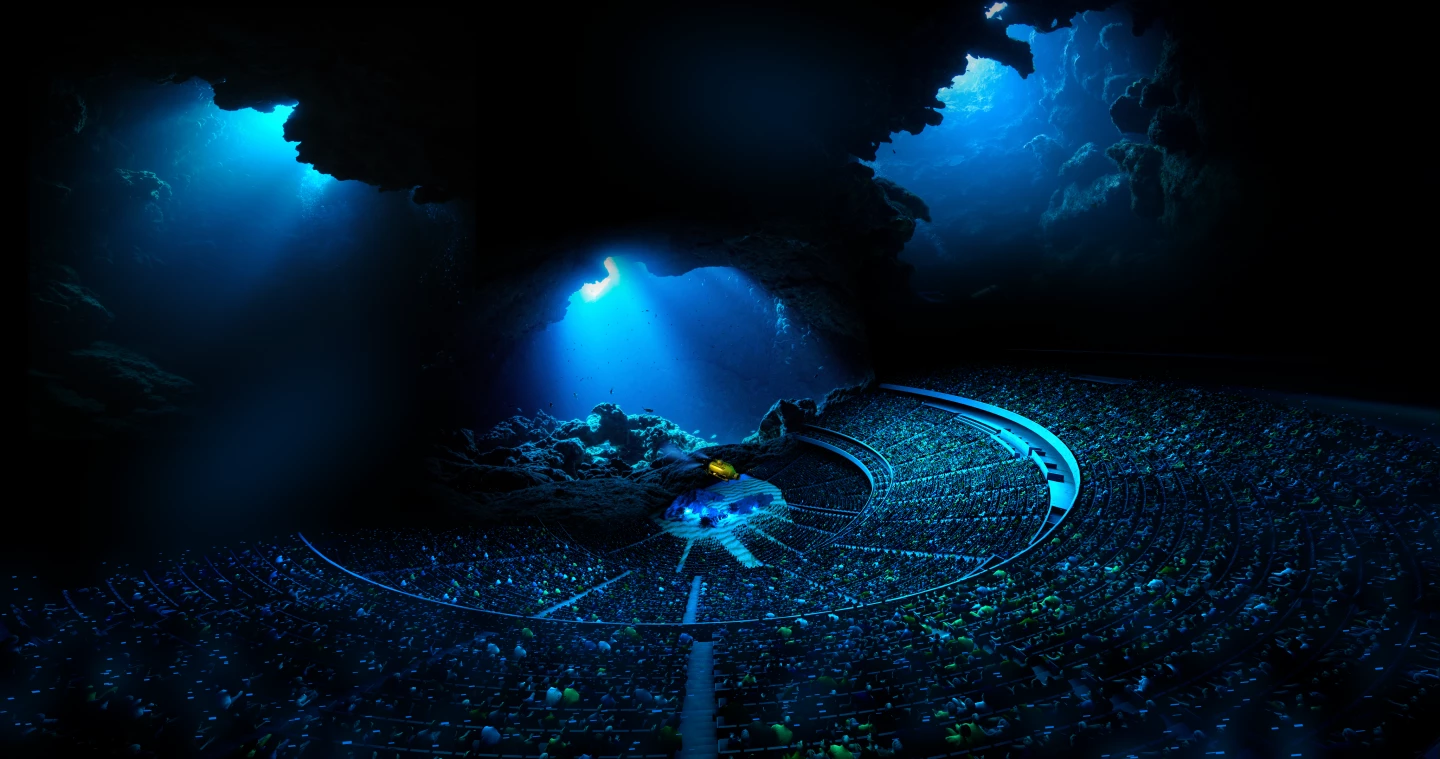Looking a bit like a huge high-tech snow globe, the Sphere stands out even among Las Vegas' numerous architectural oddities. The incredible building, which is the world's largest spherical structure, also features the world's largest LED display on its exterior, which was officially illuminated for the first time with a Hello World message last night.
The Sphere rises to a height of 366 ft (111 m) and has a width of 516 ft (157 m), making it even larger than the massive Avicii Arena in Sweden. It has an estimated budget of around US$2.3 billion and its LED exterior measures 580,000 sq ft (almost 54,000 sq m). It consists of roughly 1.2 million LED pucks, with each puck in turn containing 48 individual LED diodes. The exterior is also fully programmable, allowing it to host some genuinely impressive images outside.
The building has a capacity of 17,600 seats, or 20,000 with standing spaces, and will host large concerts as well as sporting events like boxing and mixed martial arts. The interior has not been revealed yet, except in render form, and its main venue bowl will be defined by a huge curved screen. Not to be confused with the LEDs outside, this 16K x 16K LED display will be situated on the ceiling inside and wrap over and around the audience to ensure an immersive experience.

10,000 seats will be equipped with so-called 4D tech, including a haptic system and environmental effects to make audiences feel a breeze, a change in temperature and even experience smells. A special camera system has been created to provide content for the immersive experiences that can capture imagery at up to 120 frames per second in 18K square format.
"As part of a special show to celebrate the Fourth of July, for the first time ever, Sphere's 580,000 square foot fully-programmable LED exterior – the largest LED screen on Earth – was completely illuminated," explained the Sphere's press release. "The show started with a welcome – 'Hello World' – and was followed by dazzling fireworks and stars and stripes animations, before transitioning through a wide array of visual content, from vibrant underwater scenes to performances to vividly-textured lunar surfaces, putting on full display the versatility of this unparalleled canvas." The company hasn't posted any videos to YouTube yet, but there are a few on Instagram should you wish to see some of the action for yourself.

The Sphere is now structurally complete and is expected to open in September, with a run of concerts by the band U2. The project is actually one of a pair, with its counterpart planned for London, UK, however a government minister has stepped in over concerns about light pollution and its future seems uncertain.
Source: Sphere Entertainment










